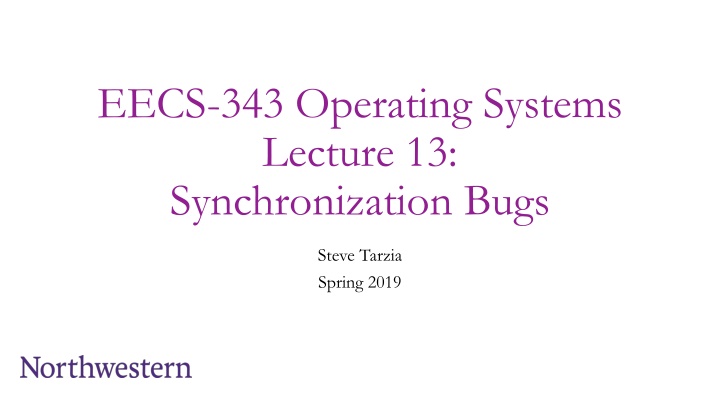Grace in the Old Testament - God's Promises of Favor and Mercy
The Old Testament reveals God's continuous extension of grace to His people through various key figures like Noah, Jacob, and Israel. Biblical texts and historical accounts affirm the presence of grace and favor long before the New Testament era, showcasing God's enduring mercy and love for His creation.
Download Presentation

Please find below an Image/Link to download the presentation.
The content on the website is provided AS IS for your information and personal use only. It may not be sold, licensed, or shared on other websites without obtaining consent from the author.If you encounter any issues during the download, it is possible that the publisher has removed the file from their server.
You are allowed to download the files provided on this website for personal or commercial use, subject to the condition that they are used lawfully. All files are the property of their respective owners.
The content on the website is provided AS IS for your information and personal use only. It may not be sold, licensed, or shared on other websites without obtaining consent from the author.
E N D
Presentation Transcript
EECS-343 Operating Systems Lecture 13: Synchronization Bugs Steve Tarzia Spring 2019
Last Lecture Concurrent Data Structures Simplest strategy is to use one big lock, but this limits concurrency It s thread-safe, but not really concurrent Concurrent queue used two locks (head & tail) Concurrent hash table used one lock per bucket Condition Variables are used to order threads, using signal() & wait(). Wait puts a thread to sleep, signal wakes a waiting thread. Pthreads allows spurious wakeups, so we still need to check a status variable. broadcast() wakes all waiting threads Producer/consumer queue was implemented using two condition variables.
Semaphores A generalization of condition variables and locks But they re more difficult to understand and use More general is not always better Semaphore has an integer value often indicates the number of resources available Two functions (with many alternative names!): up/V/signal/post: Increase the value. If there is a waiting thread, wake one. down/P/wait: Decrease the value. Wait if the value is negative. Counting semaphore is very useful in cases when a finite number of threads are allowed to use a resource (eg., bounded buffer)
Semaphores vs Condition Variables Semaphores Up/Post: increase value and wake one waiting thread Down/Wait: decrease value and wait if it s negative Condition Variables Signal: wake one waiting thread Wait: wait Compared to CVs, Semaphores add an integer value that controls when waiting is necessary It counts the quantity of a shared resource currently available Up makes a resource available, down reserves a resource Negative value -x means that x threads are waiting for the resource
Implementing a lock with a semaphore Choose an appropriate initial value for the semaphore To implement a Lock: Initialize to 1 (access to the critical section is the one shared resource) Lock Down: (decreases the value and waits if negative) Will decrease the value to 0 if it lock is not already taken Will decrease the value to -1 and wait if the lock is taken (value was 0) Unlock Up: (increases the value and wakes one waiting thread) If value was 0, then no thread was waiting, and no thread is woken If value was -1, then one thread was waiting, and it is woken If value was -x, then x threads are waiting, one is woken, value becomes x-1. If value is already 1, Up should not be called. (Unlock before lock?!)
Reader-writer Lock Some resources don t need strict mutual exclusion, especially if they have many read-only accesses. (eg., a linked list) Any number of readers can be active simultaneously, but Writes must be mutually exclusive, and cannot happen during read API: acquire_read_lock(), release_read_lock() acquire_write_lock(), release_write_lock()
Reader-writer Lock Writelock must be held during read to block writes. Number of active readers is counted. First/last reader handles acquiring/releasing writelock.
Common synchronization bugs Atomicity violation Critical section is violated (due to missing lock). Order violation Something happens sooner (or later) than we expect. Deadlock Two threads wait indefinitely for each other. Livelock(not common in practice) Two threads repeatedly block each other from proceeding and retry.
Atomicity violation It s relatively easy to find and protect critical sections, But often we forget to add locks around other uses of the shared data. Obvious critical section is here: Two threads should not enter this at once But, we also have to make sure that file is not modified elsewhere. Even if this one-line close is atomic we have to make sure it doesn t run during the above critical section. lock(lck); if (file == NULL) { file = open("~/myfile.txt"); } write(file, "hello file"); unlock(lck); close(file); // whoops!!
Order violation Code often requires a certain ordering of operations, especially: Objects must be initialized before they re used Objects cannot be freed while they are still in use Parent file = open("file.dat"); thread_create(child_fcn); // do some work close(file); Child Thread child_fcn() { write(file, "hello"); } Close must happen after write, but code does not enforce this ordering.
Why is this difficult? It seems like we can just add lots of locks and CVs to be safe, right? Wrong! Too many locks can cause deadlock indefinite waiting. How about just one big lock? (+) Cannot deadlock with one lock. ( ) However, this would limit concurrency If every task requires the same lock, then unrelated tasks cannot proceed in parallel. Concurrent code is always difficult to write although somewhat easier with some higher-level languages
Locking granularity Coarse grained lock: Use one (or a few) locks to protect all (or large chunks of) shared state Linux kernel < version 2.6.39 used one Big Kernel Lock Essentially only one thread (CPU core) could run kernel code It s simple but there is much contention for this lock, & concurrency is limited Fine grained locks: Use many locks, each protecting small chunks of related shared state Leads to more concurrency and better performance However, there is greater risk of deadlock
Deadlock A concurrency bug arising when: Two threads are each waiting for the other to release a resource. While waiting, the threads cannot possibly release the resource already held. So the two threads wait forever. Can arise when multiple shared resources are used. For example, acquiring two or more locks.
Simple example: four-way stop Traffic rules state that you must yield to the car on your right if you reach the intersection simultaneously. This rule usually works well. But there s a problem if four cars arrive simultaneously. Circular waiting!
Another 4 way intersection, without stop signs There is a problem here if drivers are unwilling to reverse
Dining philosophers A theoretical example of deadlock There are N philosophers sitting in a circle and N chopsticks left and right of each philosopher Philosophers repeatedly run this loop: 1. Think for some time 2. Grab chopstick to left 3. Grab chopstick to right 4. Eat 5. Replace chopsticks If they all grab the left chopstick simultaneously (step 2), they will deadlock and starve! A solution: one philosopher must grab right before left
A more practical deadlock example Thread 1 lock(L1); lock(L2); // do work unlock(L2); unlock(L1); Thread 2 lock(L2); lock(L1); // do work unlock(L1); unlock(L2); If we are unlucky and both of the first lines execute before the second lines, we will deadlock. T1 holds L2 while waiting for L1 T2 holds L1 while waiting for L2
Deadlock requires four conditions 1. Mutual exclusion Threads cannot access a critical section simultaneously In other words, we re using locks so there is the potential for waiting. 2. Hold-and-wait Threads do not release locks while waiting for additional locks 3. No preemption Locks are always held until released by the thread. We cannot cancel a lock. 4. Circular wait Thread is waiting on a thread that is waiting on the original thread This can involve just two threads or a chain of many threads. Avoid any one of these to avoid deadlock.
4. Avoiding Circular Wait This is the most practical way to avoid deadlock. The simplest solution is to always acquire locks in the same order. If you hold lock L1 and are waiting for lock L2 The holder of L2 cannot be waiting on you, because they would have already acquired L1 before acquiring L2. However, in practice it can be difficult to know when locks will be acquired because they can be buried in subroutines.
Ordered locking for dining philosophers The chopsticks are shared resources, like locks If we require the lower-numbered chopstick to be grabbed first, this eliminates circular waiting. Philosophers A, B, C grab left then right. However philosopher D will grab right then left. If everyone tries to start at once, A & D race to grab chopstick 0 first, and the winner eats first. While one is waiting to grab its first chopstick a neighbor will be able to grab two chopsticks. 2 3 C B D A 1 0
2. Trylock to avoid hold and wait We can avoid deadlock if we release the first lock after noticing that the second lock is unavailable. Trylock tries to acquire a lock, but returns a failure code instead of waiting if the lock is taken: This code cannot deadlock, even if another thread does the same with L2 first, then L1. However it can livelock two threads can get stuck in this loop forever
Livelock vs Deadlock Livelock is a condition where two threads repeatedly take action, but still don t make progress. Differs from deadlock because deadlock is always permanent. Livelock involves retries that may lead to progress, but there is no guarantee of progress. A malicious scheduler can always keep the livelock stuck Any randomness in the timing of retries will fix livelock. In practice, livelock is a much less serious concern than deadlock.
Other deadlock avoidance strategies Wait-free synchronization Instead of using locks, build data structures that directly use atomic primitives like compare-and-swap or load-linked & store-conditional. This is difficult! Don t simultaneuously schedule threads that use the same sets of locks. Like the one big lock strategy, this reduces concurrency and performance. Detect and kill: Periodically check which threads are holding locks and waiting for locks. If there is a circular wait, then kill the process. It s not making progress anyway! Yes, the crash can be harmful, but it s inevitable because we re stuck. At least it frees up resources for other processes and makes the user aware of the deadlock bug.
Helgrind tool Helgrind (part of the Valgrind tool) detects many common errors when using the POSIX pthreads library in C & C++, such as: Race conditions (missing locks) Lock ordering problems (leading to deadlock) Double-unlocking Freeing a locked lock and much, much more http://valgrind.org/docs/manual/hg-manual.html
Recap Synchronization Bugs Semaphore (up/down) is an all-purpose synchronization primitive Reader-writer lock allows multiple readers, but one writer. Adding too many locks can lead to deadlock, which requires: Mutual exclusion (avoid locks to avoid deadlock) Hold and wait (use trylock to release first lock to before deadlocking) No preemption Circular wait (always acquire locks in the same order to avoid deadlock) Dining philosophers was an example of deadlock Circular wait can be avoided by making one philosopher grab right-hand side instead of left first.























